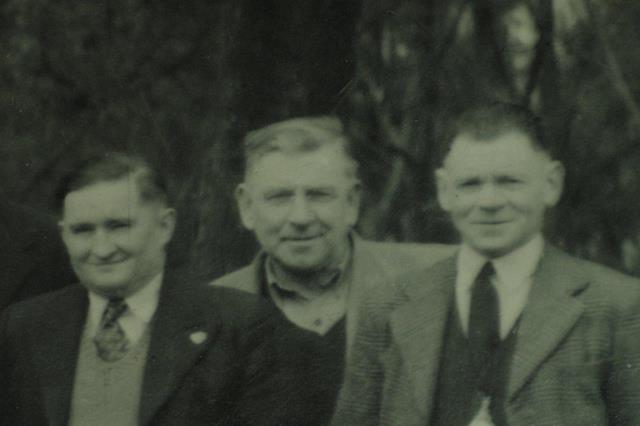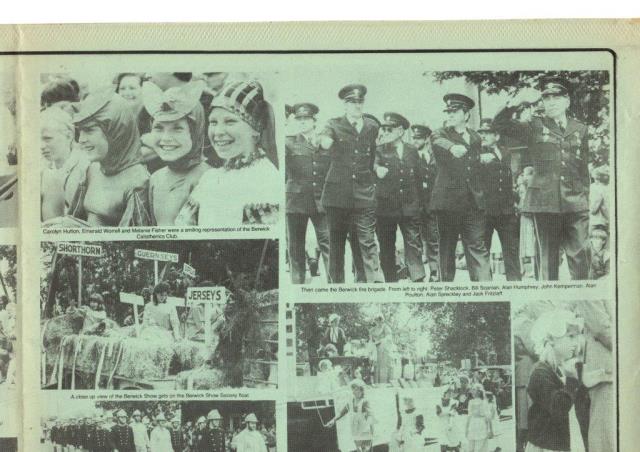
The Fritzlaff name has been synonymous with the Harkaway and Berwick regions since the mid-1800s, as NEIL LUCAS explains in his latest look at the significance of street and place names in the region.
Fritzlaff Court
An early settler in Harkaway was John Martin Friedrick Fritzlaff, who at the age of 20 years, arrived in the Harkaway hills in 1845.
He was, like many other settlers in Harkaway, a Prussian who followed the Lutheran faith. Members of his family have remained in the Berwick area through a number of generations.
After a few years at Harkaway, the Gold Rush of the 1850s lured Fritzlaff and he left to try his luck at the goldfields. He returned in 1855 with a wife Johanna and a tidy sum from his gold digging.
In December that year, at a Government auction, he and Wilhelm Weise acquired 151 acres (61 hectares) of land and established a farm on the north side of King Road west from Baker Road to the vicinity of what is now the Harkaway roundabout.
Although Harkaway Road at that time ran along the alignment of roads now named Old Coach and Baker Roads, there was a track around the hill through the Wilson’s property which alleviated the necessity of horse drawn vehicles negotiating the steep descent into and climb out of the Grassmere Creek.
The diversion road was created by the shire council at a later time.
Fritzlaff and Weise divided their land into two portions and Fritzlaff established a store and post office on his land in King Road.
The mail was carried on horseback to and from the post office to meet deliveries and pick-ups by Cobb & Co coaches at the Berwick Inn stop.
John’s farm was often visited by the local indigenous people, who it is recorded were treated to a mug of sweet billy tea “which they always seemed to appreciate”.
John was an active member of Harkaway’s Lutheran community and in 1869, together with four other local followers, purchased land from Ernst Wanke for the purpose of erecting a building which could be used as both a church and a school. The five men jointly held the land in trust for their Lutheran community.
John was a man of significant presence, his huge physical strength and ability as a marksman with pistol or rifle was well-known throughout the district. John most often took the honours at competitions at the rifle range.
He was known to carry bags of flour on his back from Berwick to his store in Harkaway along the original track which included the hills on what are now Old Coach and Baker Roads. John also carried goods to and from his store to Melbourne by horse and wagon.
John Martin Fritzlaff died in 1900, having lived at Harkaway for his final 45 years. His wife Johanna died in 1917 at the age of 92. Their children were all boys – John, Otto, Emmanuel and Carl.
When the Lutherans erected a bell tower adjacent to their building at Harkaway in 1869, young Emmanuel aged 15, who had assisted in carting timber for the construction was allowed to climb the tower to be the first to ring the large bell which had been imported from Germany. Climbing to the top of the tower at the opening ceremony he “grasped the handle firmly and rang the bell”.
John Martin Fritlaff’s son Otto took up residence in Berwick where Otto, and later his son Mahoney (known as Monni), were builders constructing many homes in the district including the well-known “Athol” in Langmore Lane, the former home of local doctors Percy Langmore and Noel Stephenson.
Another son Frederick (Fred) who was born in 1888 also lived in Berwick where many members of his family still reside.
Fred was a coachbuilder and blacksmith his business operating from a building on Clyde Road and later on the south-west corner of Langmore Lane and Gloucester Avenue.
When the Berwick Fire Brigade was established in July 1926, Fred was appointed its inaugural Captain commencing a tradition of CFA service in the family.
Fred also became involved in the re-furbishment of the Berwick Recreation Ground (now Arch Brown Reserve) in 1957 representing the Berwick Football Club on a committee formed to raise funds to upgrade the oval and surrounds.
Fred’s daughter Mary represented the fire brigade in a “Queen Competition” where the young lady raising the largest sum was “crowned the Queen” at a ball conducted by the committee.
Fred and his wife Elizabeth had four children – Jack born in 1922, Frank 1927, Pat 1929 and Mary 1936. Each of the children attended the Berwick State School through to Grade 8.
Elizabeth worked at Berwick Bush Nursing Hospital for many years doing cooking and laundry.
Eldest son Jack joined the Army in the Second World War and was posted to Rottnest Island in Western Australia as part of a contingent guarding against aerial attack. After the war Jack married Joan and had two children – Ken and Kaye who still live in Berwick.
Jack took up building as a career and became a local builder constructing mainly homes throughout the Berwick area. He was also a keen volunteer fireman and captained the Berwick Brigade for nine years from 1954/1963.
Frank was employed by Loveridges for many years carting goods by horse and cart around the district, including a mail delivery to Harkaway. He later teamed with Margaret de Groot managing the Berwick Inn prior to moving from the town.
His sister Pat married Kevin Clydesdale, then a baker by trade, and still lives in Berwick, as do children Peter and Stephen. Mary married and moved to Sydney.
Jack’s son Ken also joined the CFA as a volunteer and still serves in the Berwick Brigade including eight years as Captain from 1989/1997. Ken was also a local builder before taking up a permanent position with CFA first supporting brigades in the Region and now undertaking technical duties.
Other members of the family have lived in Berwick for many years. All of the wives in the family served in various town support bodies including the football club, tennis club, fire brigade, and as was normal for the times, casually supported other bodies such as the Berwick Library and Berwick Bush Nursing Hospital.
In the early 1970s the creation of a number of cul-de-sacs by the former Shire of Berwick to reduce cross intersections and thus improve safety resulted in the need for the allocation of new names. The naming of Fritzlaff Court was adopted in recognition of the service to the community given by the Fritzlaff family over the years.









